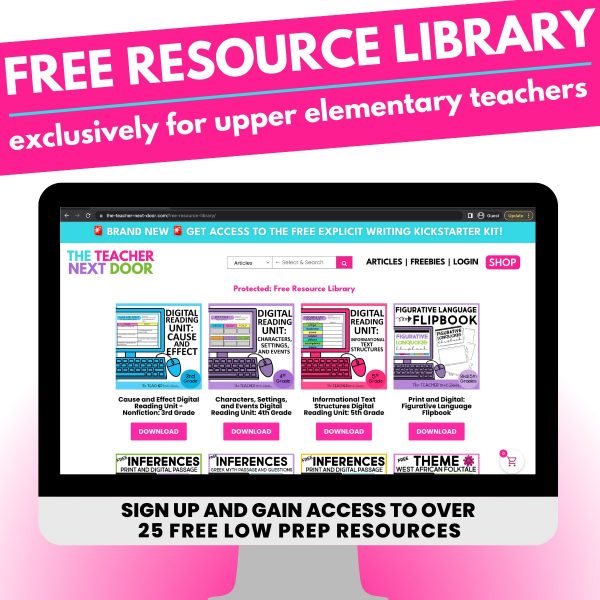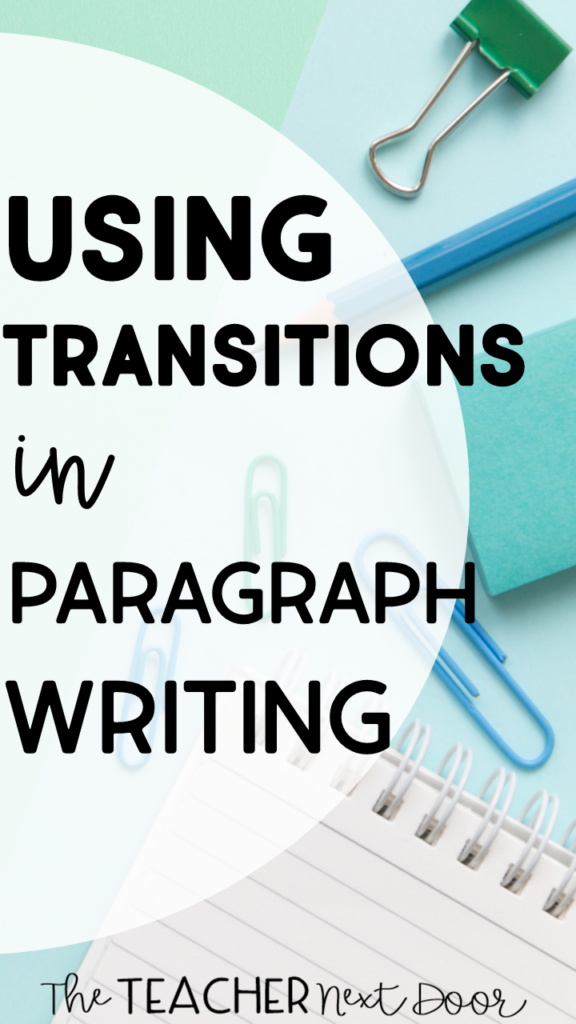
This is the last of four in my series on Teaching Paragraph Writing.
If you’ve been following along, you know that we’ve discussed Topic Sentences, Supporting Ideas and Details, and even Conclusions…
And now we’re going to do a little more advanced work by adding transitions to our paragraph. These tiny words and phrases can make a big difference in paragraph writing. Transitions really make paragraphs flow. They also help readers understand the paragraph’s organization.
So, how exactly do I teach transitions for paragraph writing? Well, compared to teaching conclusions…it’s a breeze! 🙂
1. Brainstorm a Transition List
Some students have a pretty good foundation for basic transitions in writing by the time they enter my class for 4th/5th grade. Of course, I would like to expand their little brains with additional ones, but overall, I’d say many students in upper elementary are off to a good start.
Before I give examples and do any real modeling of transitions, I like to have students work in pairs to come up with a list of possible transitions on their whiteboards. Once they’ve worked on this for a while, we go over their answers and try to make a class list of as many new transitions as possible.
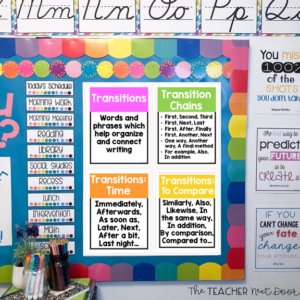
2. Go Over the Transitions Reference List
Next, (notice the transition?) I pass out a mega-list of transitions I have compiled. We discuss category types and appropriate times to use the general groups of transition categories.

When we’re finished discussing these, I ask students to keep this list and use it as a reference. I may either ask them to put it in their binders or glue it into their Writer’s Notebooks. The list below is the one I actually use and is included in the Transition packet.
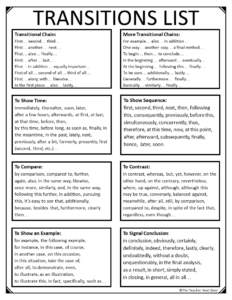
3. Talk Through the Paragraph Using Transitions
I know that sometimes students see writing as a chore. I may love it and I try to get them excited about it too, but even if I do cartwheels about what we’re doing, it’s still about as fun as brushing teeth for some students.
One of the ways I try to keep their motivation high is to sometimes do writing lessons or “work”, without students actually lifting a pencil. I often make a deal with my students when we do certain practice or modeling activities that if they stay with me, stay tuned, stay on task, AND participate, that they won’t have to do the actual writing part…this time, for the modeling part that is.
There will come a time when it’s their turn to write, of course. So, how we “Talk Through” a paragraph is that I start a simple paragraph…like How to Take Care of a Dog or How to Succeed in School, and students help me by “feeding me” the sentences as we build the paragraph together.
When we get to the supporting ideas especially, we discuss which set of three transitions would work the best for where we want to take our paragraph. This oral practice (visual too, as I sometimes speed write it as they tell me ideas) is a great way to practice using transitions.
4. Independent Working Times
Before students actually write paragraphs with the correct use of transitions, I have them look at some paragraph examples to find as many transitions as they can find. They also do a number of worksheets that ask them to add a transition that makes sense or to circle the best transition for a particular sentence or paragraph.
All of this practice reinforces the concept of using transitions before asking students to write on their own. This process for each component of paragraph writing has made a huge difference for my students.
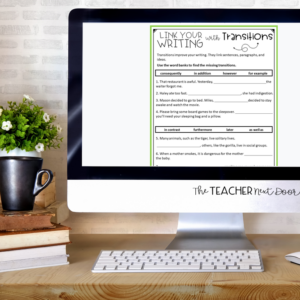
You can definitely make your own materials for this, but if you’d like a ready-to-use resource, I created a unit on transitions that will save you time.
5. Time to Actually Write!
Now that my students have a really good foundation for transitions, it’s time to put all of this together and have them actually write their own paragraphs. I always have students make a t-chart (see the post on topic sentences for an explanation) on the back of their paper or on a separate sheet of paper before we start to organize their ideas and to pre-plan it out.
I make sure to choose my paragraph topics carefully, so they are familiar to ALL students. For example, writing one on Disneyland or Hawaii is not going to work for many students who haven’t been able to go there. Also, I try to make them fairly interesting, so they’ll enjoy the writing process a bit more.
A few of my favorite topics include My Favorite Place, My Favorite Sport/Hobby, and My Best Friend (or one of my best friends for those who have too many to choose just one!). I also make sure to give students a specific assignment of what to write in the beginning. I have found over the years that for many students, an open-ended assignment of “Write a paragraph about anything you’d like” means that they often spend MOST of their time trying to decide what to write. I try to avoid this by choosing the paragraph topic for them but once in a blue moon, I let students choose.
Once students learn a concept, we’re never really finished with it. I like to spiral whatever important skills we learn in order to strengthen them and build upon them throughout the year. So, we continue to practice paragraph writing as we go, and eventually, I teach students to write a five-paragraph essay…whew!
My philosophy is that if we can get students to truly understand the parts of a paragraph and master the basic structure of a paragraph, we can help them create quality paragraphs. This leads to quality essays and reports.
If you are in need of a huge time-saver bundle of paragraph writing resources, I would encourage you to take a look at my Complete Paragraph Writing Bundle.
These are the materials I have created and used for many years and I cannot tell you how much they have helped my students grow as writers. This bundle comes with both print and digital formats to give you greater flexibility!
Here it is if you’d like to check it out:
If you’d like to get more teaching ideas for paragraph writing, here are a few posts you might like:
5 Tips for More Effective Paragraph Writing
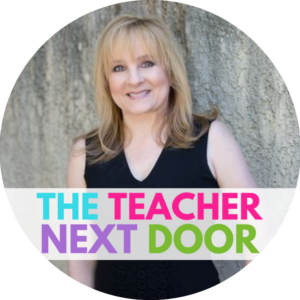
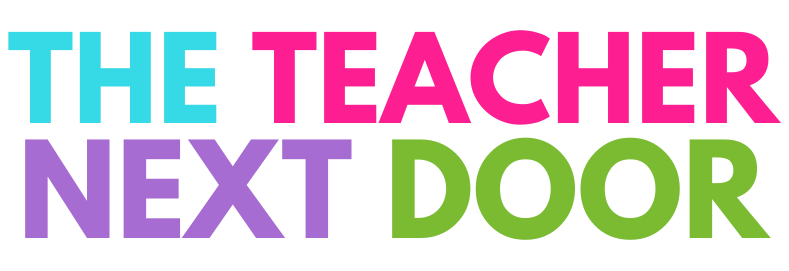
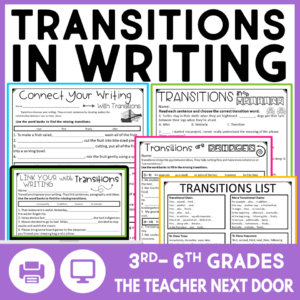
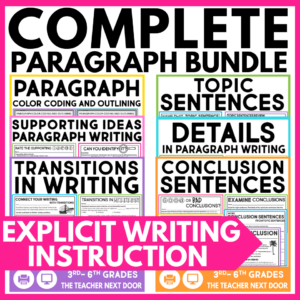
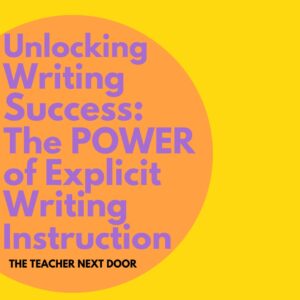
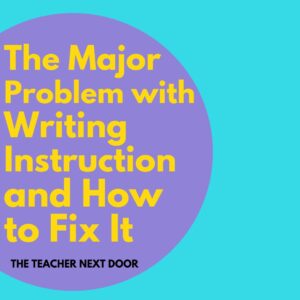
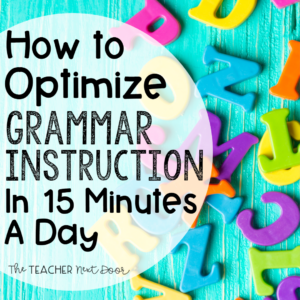
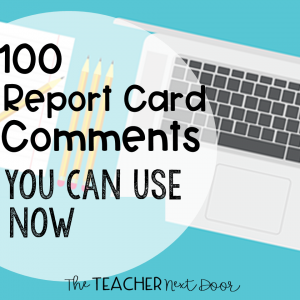
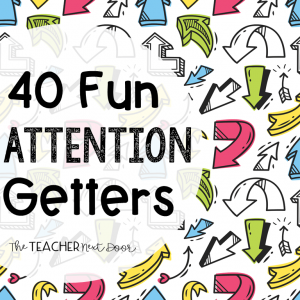
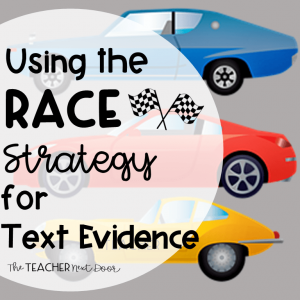


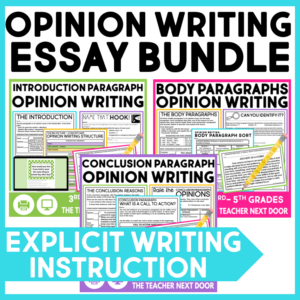

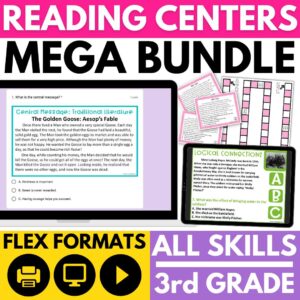
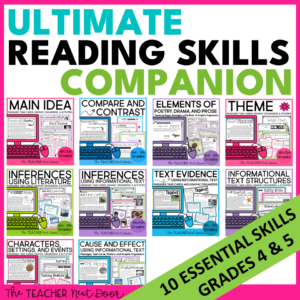
![DAY THREE DROPS! ⬇️⬇️⬇️
👉 Today, you can…
✔️ Grab done-for-you resources to keep your students engaged for $3
✔️ Grab FREE instant download activities!
✔️ Grab all of this week’s deals if you missed any!
ALL 5 of these comprehensive resources from my shop are $3 today to help fight spring fever in your classroom! 🌸🌼🌷
✏️ [BRAND NEW] Step-By-Step Personal Narrative Unit
✏️ Paired Texts Fiction to Nonfiction for Spring
✏️ 4th Grade Morphology & Vocabulary Unit
✏️ Main Idea Unit for 4th & 5th Grades
✏️ Figurative Language Complete Unit for Busy Teachers
Want the link to all the deals and freebies? Comment APRIL PARTY and we’ll send it directly to your DMs! 📫💌
PS - Don’t forget that you can still access all the Day 1 and Day 2 Deals too! 🩷](https://the-teacher-next-door.com/wp-content/plugins/instagram-feed/img/placeholder.png)

